Christian Blum
Combinatorial Optimization for All: Using LLMs to Aid Non-Experts in Improving Optimization Algorithms
Mar 14, 2025Abstract:Large Language Models (LLMs) have shown notable potential in code generation for optimization algorithms, unlocking exciting new opportunities. This paper examines how LLMs, rather than creating algorithms from scratch, can improve existing ones without the need for specialized expertise. To explore this potential, we selected 10 baseline optimization algorithms from various domains (metaheuristics, reinforcement learning, deterministic, and exact methods) to solve the classic Travelling Salesman Problem. The results show that our simple methodology often results in LLM-generated algorithm variants that improve over the baseline algorithms in terms of solution quality, reduction in computational time, and simplification of code complexity, all without requiring specialized optimization knowledge or advanced algorithmic implementation skills.
Multi-Agent Systems Powered by Large Language Models: Applications in Swarm Intelligence
Mar 05, 2025Abstract:This work examines the integration of large language models (LLMs) into multi-agent simulations by replacing the hard-coded programs of agents with LLM-driven prompts. The proposed approach is showcased in the context of two examples of complex systems from the field of swarm intelligence: ant colony foraging and bird flocking. Central to this study is a toolchain that integrates LLMs with the NetLogo simulation platform, leveraging its Python extension to enable communication with GPT-4o via the OpenAI API. This toolchain facilitates prompt-driven behavior generation, allowing agents to respond adaptively to environmental data. For both example applications mentioned above, we employ both structured, rule-based prompts and autonomous, knowledge-driven prompts. Our work demonstrates how this toolchain enables LLMs to study self-organizing processes and induce emergent behaviors within multi-agent environments, paving the way for new approaches to exploring intelligent systems and modeling swarm intelligence inspired by natural phenomena. We provide the code, including simulation files and data at https://github.com/crjimene/swarm_gpt.
Improving Existing Optimization Algorithms with LLMs
Feb 12, 2025Abstract:The integration of Large Language Models (LLMs) into optimization has created a powerful synergy, opening exciting research opportunities. This paper investigates how LLMs can enhance existing optimization algorithms. Using their pre-trained knowledge, we demonstrate their ability to propose innovative heuristic variations and implementation strategies. To evaluate this, we applied a non-trivial optimization algorithm, Construct, Merge, Solve and Adapt (CMSA) -- a hybrid metaheuristic for combinatorial optimization problems that incorporates a heuristic in the solution construction phase. Our results show that an alternative heuristic proposed by GPT-4o outperforms the expert-designed heuristic of CMSA, with the performance gap widening on larger and denser graphs. Project URL: https://imp-opt-algo-llms.surge.sh/
VisGraphVar: A Benchmark Generator for Assessing Variability in Graph Analysis Using Large Vision-Language Models
Nov 22, 2024



Abstract:The fast advancement of Large Vision-Language Models (LVLMs) has shown immense potential. These models are increasingly capable of tackling abstract visual tasks. Geometric structures, particularly graphs with their inherent flexibility and complexity, serve as an excellent benchmark for evaluating these models' predictive capabilities. While human observers can readily identify subtle visual details and perform accurate analyses, our investigation reveals that state-of-the-art LVLMs exhibit consistent limitations in specific visual graph scenarios, especially when confronted with stylistic variations. In response to these challenges, we introduce VisGraphVar (Visual Graph Variability), a customizable benchmark generator able to produce graph images for seven distinct task categories (detection, classification, segmentation, pattern recognition, link prediction, reasoning, matching), designed to systematically evaluate the strengths and limitations of individual LVLMs. We use VisGraphVar to produce 990 graph images and evaluate six LVLMs, employing two distinct prompting strategies, namely zero-shot and chain-of-thought. The findings demonstrate that variations in visual attributes of images (e.g., node labeling and layout) and the deliberate inclusion of visual imperfections, such as overlapping nodes, significantly affect model performance. This research emphasizes the importance of a comprehensive evaluation across graph-related tasks, extending beyond reasoning alone. VisGraphVar offers valuable insights to guide the development of more reliable and robust systems capable of performing advanced visual graph analysis.
A Learning Search Algorithm for the Restricted Longest Common Subsequence Problem
Oct 15, 2024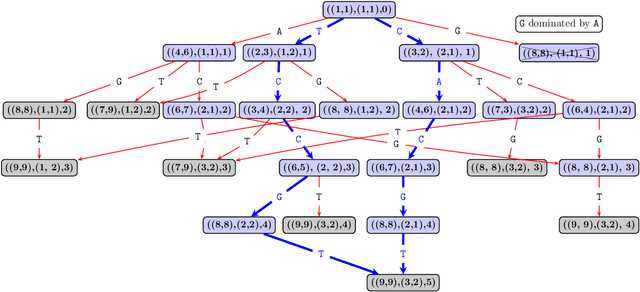
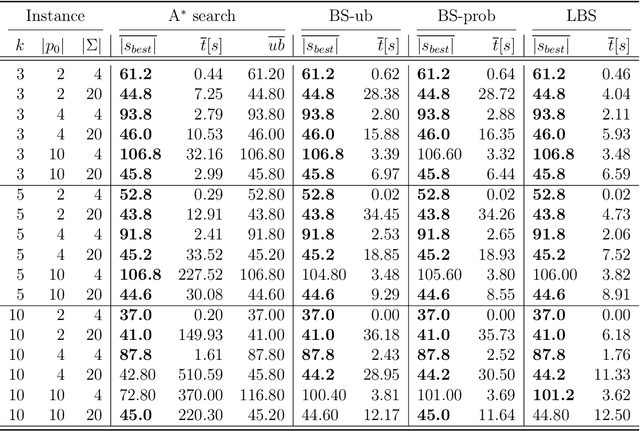
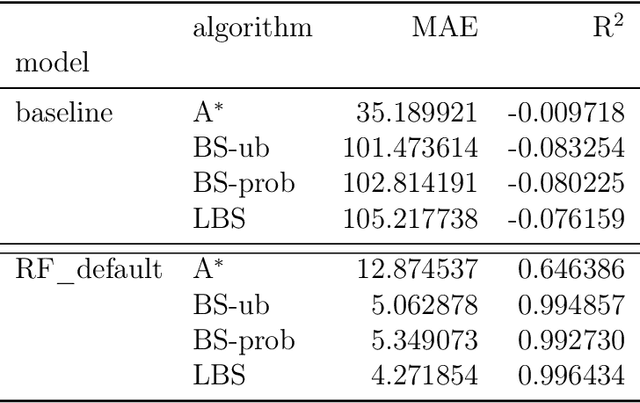

Abstract:This paper addresses the Restricted Longest Common Subsequence (RLCS) problem, an extension of the well-known Longest Common Subsequence (LCS) problem. This problem has significant applications in bioinformatics, particularly for identifying similarities and discovering mutual patterns and important motifs among DNA, RNA, and protein sequences. Building on recent advancements in solving this problem through a general search framework, this paper introduces two novel heuristic approaches designed to enhance the search process by steering it towards promising regions in the search space. The first heuristic employs a probabilistic model to evaluate partial solutions during the search process. The second heuristic is based on a neural network model trained offline using a genetic algorithm. A key aspect of this approach is extracting problem-specific features of partial solutions and the complete problem instance. An effective hybrid method, referred to as the learning beam search, is developed by combining the trained neural network model with a beam search framework. An important contribution of this paper is found in the generation of real-world instances where scientific abstracts serve as input strings, and a set of frequently occurring academic words from the literature are used as restricted patterns. Comprehensive experimental evaluations demonstrate the effectiveness of the proposed approaches in solving the RLCS problem. Finally, an empirical explainability analysis is applied to the obtained results. In this way, key feature combinations and their respective contributions to the success or failure of the algorithms across different problem types are identified.
Accelerating the k-means++ Algorithm by Using Geometric Information
Aug 23, 2024Abstract:In this paper, we propose an acceleration of the exact k-means++ algorithm using geometric information, specifically the Triangle Inequality and additional norm filters, along with a two-step sampling procedure. Our experiments demonstrate that the accelerated version outperforms the standard k-means++ version in terms of the number of visited points and distance calculations, achieving greater speedup as the number of clusters increases. The version utilizing the Triangle Inequality is particularly effective for low-dimensional data, while the additional norm-based filter enhances performance in high-dimensional instances with greater norm variance among points. Additional experiments show the behavior of our algorithms when executed concurrently across multiple jobs and examine how memory performance impacts practical speedup.
Metaheuristics and Large Language Models Join Forces: Towards an Integrated Optimization Approach
May 28, 2024Abstract:Since the rise of Large Language Models (LLMs) a couple of years ago, researchers in metaheuristics (MHs) have wondered how to use their power in a beneficial way within their algorithms. This paper introduces a novel approach that leverages LLMs as pattern recognition tools to improve MHs. The resulting hybrid method, tested in the context of a social network-based combinatorial optimization problem, outperforms existing state-of-the-art approaches that combine machine learning with MHs regarding the obtained solution quality. By carefully designing prompts, we demonstrate that the output obtained from LLMs can be used as problem knowledge, leading to improved results. Lastly, we acknowledge LLMs' potential drawbacks and limitations and consider it essential to examine them to advance this type of research further.
Large Language Models for the Automated Analysis of Optimization Algorithms
Feb 13, 2024Abstract:The ability of Large Language Models (LLMs) to generate high-quality text and code has fuelled their rise in popularity. In this paper, we aim to demonstrate the potential of LLMs within the realm of optimization algorithms by integrating them into STNWeb. This is a web-based tool for the generation of Search Trajectory Networks (STNs), which are visualizations of optimization algorithm behavior. Although visualizations produced by STNWeb can be very informative for algorithm designers, they often require a certain level of prior knowledge to be interpreted. In an attempt to bridge this knowledge gap, we have incorporated LLMs, specifically GPT-4, into STNWeb to produce extensive written reports, complemented by automatically generated plots, thereby enhancing the user experience and reducing the barriers to the adoption of this tool by the research community. Moreover, our approach can be expanded to other tools from the optimization community, showcasing the versatility and potential of LLMs in this field.
Saliency-Driven Hierarchical Learned Image Coding for Machines
Feb 27, 2023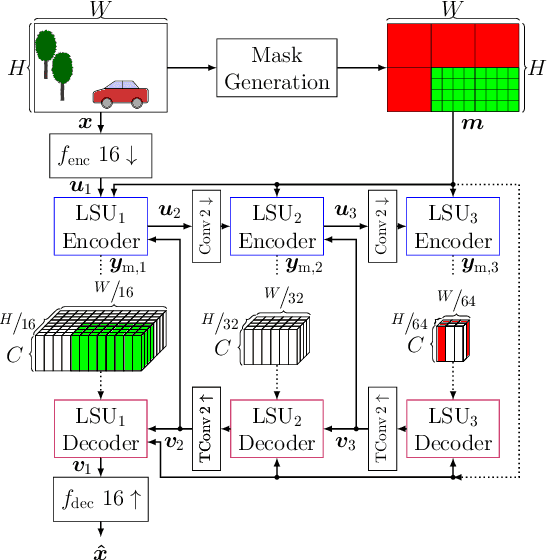


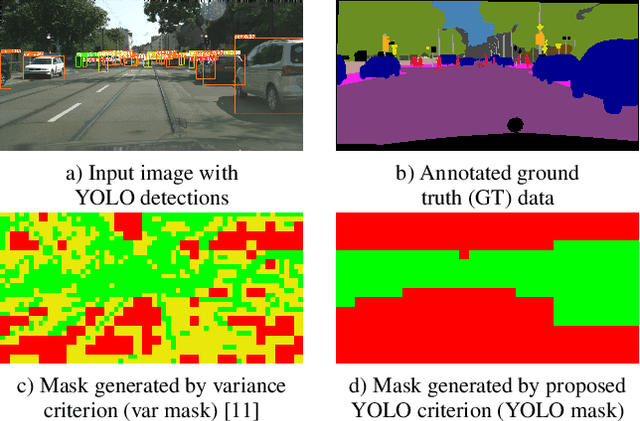
Abstract:We propose to employ a saliency-driven hierarchical neural image compression network for a machine-to-machine communication scenario following the compress-then-analyze paradigm. By that, different areas of the image are coded at different qualities depending on whether salient objects are located in the corresponding area. Areas without saliency are transmitted in latent spaces of lower spatial resolution in order to reduce the bitrate. The saliency information is explicitly derived from the detections of an object detection network. Furthermore, we propose to add saliency information to the training process in order to further specialize the different latent spaces. All in all, our hierarchical model with all proposed optimizations achieves 77.1 % bitrate savings over the latest video coding standard VVC on the Cityscapes dataset and with Mask R-CNN as analysis network at the decoder side. Thereby, it also outperforms traditional, non-hierarchical compression networks.
An Efficient Merge Search Matheuristic for Maximising the Net Present Value of Project Schedules
Oct 20, 2022



Abstract:Resource constrained project scheduling is an important combinatorial optimisation problem with many practical applications. With complex requirements such as precedence constraints, limited resources, and finance-based objectives, finding optimal solutions for large problem instances is very challenging even with well-customised meta-heuristics and matheuristics. To address this challenge, we propose a new math-heuristic algorithm based on Merge Search and parallel computing to solve the resource constrained project scheduling with the aim of maximising the net present value. This paper presents a novel matheuristic framework designed for resource constrained project scheduling, Merge search, which is a variable partitioning and merging mechanism to formulate restricted mixed integer programs with the aim of improving an existing pool of solutions. The solution pool is obtained via a customised parallel ant colony optimisation algorithm, which is also capable of generating high quality solutions on its own. The experimental results show that the proposed method outperforms the current state-of-the-art algorithms on known benchmark problem instances. Further analyses also demonstrate that the proposed algorithm is substantially more efficient compared to its counterparts in respect to its convergence properties when considering multiple cores.
 Add to Chrome
Add to Chrome Add to Firefox
Add to Firefox Add to Edge
Add to Edge